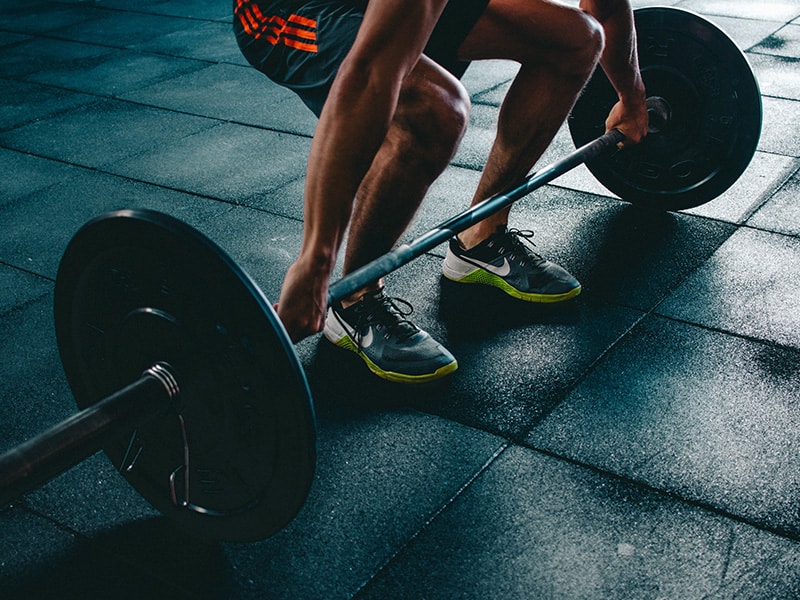We work with contractors to assess the suitability of any proposed on-site works and to provide guidance and support to reduce noise and vibration at the neighbouring receptors.
Gym Noise: A Practical Guide to Gyms & Planning Permission
- February 4, 2019
Cohesion in modern Urban Living?
Many factors contribute to the expansion of cities, including access to work as well as social and cultural amenities. The need for additional housing in city centres is under pressure and development of new residential dwellings aside commercial activities is becoming the norm. This article focuses on the growth of the fitness industry. The popularity of leading a healthy lifestyle and the demand for gyms to be convenient and with 24 hours access local to every corner of the high, has led to an unprecedented development of commercial gyms, personal training gyms and specialist gyms. Whilst this is a positive development for the health and wellbeing of society, it also has its drawbacks. The level of noise pollution generated by gyms, including amplified music, structure borne sound from weights and plant equipment, is leading to health issues and a huge increase in noise complaints.

The growth of gyms in cities?
In today’s society the popularity of gyms is unprecedented due to the societal focus on health and wellbeing. Therefore, the presence of gyms in the built environment must be considered to ensure that they can mutually co-exist alongside the existing and future residential demand on city centres. In addition to this, there is a large variation in the type and styles of gyms available such as:
- Commercial Training Gyms – Typical “standard” format gyms such as Pure Gym, Anytime Fitness
- Personal Training Gyms – Focus on one to one training and classes
- Specialist Gyms – Powerlifting, Yoga centric, Pilates or CrossFit
Each type of gym comes with its separate issues related to noise impact and should be assessed against what activities are proposed to be undertaken within the gym.
The potential impact and planning permission?
When applying for planning permission for a gym, the proposed gym will be assessed by the Local Authority in accordance with the National Planning and Policy Framework 2018, which states in Paragraph 180:
Planning policies and decisions should also ensure that new development is appropriate for its location considering the likely effects (including cumulative effects) of pollution on health, living conditions and the natural environment, as well as the potential sensitivity of the site or the wider area to impacts that could arise from the development. In doing so they should:
- Mitigate and reduce to a minimum potential adverse impact resulting from noise from new development – and avoid noise giving rise to significant adverse impacts on health and the quality of life;
- Identify and protect tranquil areas which have remained relatively undisturbed by noise and are prized for their recreational and amenity value for this reason; and
- Limit the impact of light pollution from artificial light on local amenity, intrinsically dark landscapes and nature conservation.
Therefore, the combination of the demand for growth of residential developments in city centres, alongside the demand for gyms to be locally available creates noise sensitive developments in close proximity to complex noise generating developments. This requires a high level of acoustic design and assessment prior and during the design stage of any gym.
What noise does a gym create?
The types of gyms can vary significantly such as Commercial Training Gyms, Personal Training Gyms and Specialist Gyms; such as power lifting, yoga centric, pilates or crossfit . The sources of noise vary but can be broadly put into the following categories;
- Amplified Music Noise
- People Noise both inside the premises and arriving/departing
- Fitness Classes Including Spinning Classes
- Impact Noise from Free Weights Areas
- Impact Noise from Fixed Weights Machines
- Impact Noise from Heavy Duty Free-weights (50kg +)
- Plant Noise (Air Conditioning Units)
What needs assessing and acoustically treating to minimise the impact on the surrounding area?
Noise in your day to day life can be causing an unknown stress to your health and wellbeing. Exposure to prolonged or excessive noise has been proven to lead to a range of health issues, including:
- Poor Concentration
- Stress
- Lower Workplace Productivity
- Communication Difficulties
- Fatigue due to lack of sleep
- Cardiovascular Disease
- Cognitive Impairment
- Tinnitus
- Hearing Loss
The World Health Organisation (WHO) Is the leading authority on research on the effects of exposure to excessive noise levels. In 2011 WHO released a report ‘Burden of disease from environmental noise’, this study analysed the effect of transportation noise, as well as other city noise sources and assessed the links to the health conditions outlined above. They found that at least one million healthy years of life are lost each year in Europe alone due to noise pollution. The primary issue is interrupted sleep which leads to impaired memory and creativity, impaired judgement and weakened psychomotor skills. The nature of the noisy modern life that we have created for ourselves means we need to recognise that noise pollution is a serious health concern and find sustainable ways to managed and reduce it.
How can noise affect your health and day to day life?
The noise that gyms generate can be broadly separated in to a number of categories;
- Noise Breakout – This includes noise breaking out of the façade of the building from amplified music, patrons and general operations of a gym.
- Plant Noise – Gyms will require some sort of heat recovery system to regulate the temperature within the premises so external air conditioning units are common. The air handling units will be externally mounted and will generate noise that requires assessing.
- Structure borne Noise Transfer – Weight Drops can be from free weights, typically ranging up to a max of 45 – 50kg but also heavier weights from deadlifting activities which can range up to 50kg – 200kg.
- Airborne Noise Transfer – Amplified music breaking through an adjoining partition floor or wall to neighbouring residential dwellings or commercial premises.
What needs to be considered in the Acoustic Design of Gyms?
There are a number of areas that should be considered in the acoustic design of gyms:
- The location of the Gym: Gyms generate a high level of airborne and impact noise and so they should be located away from residential dwellings. Due to the modern urban city centre living, it is often impossible, and gyms are being increasingly located in mixed use developments adjacent to habitable spaces. In these scenarios, high levels of sound insulation of the adjoining walls and floors will be required.
- The type and Size of Gym: The types and size of gyms can vary, and this will affect the level of noise emitted. The following
- Amplified Music Noise
- People Noise both inside the premises and arriving/departing
- Fitness Classes Including Spinning Classes
- Impact Noise from Free Weights Areas
- Impact Noise from Fixed Weights Machines
- Impact Noise from Heavy Duty Free-weights (100kg +)
- Plant Noise (Air Conditioning Units)
In typical commercial gyms, such as Pure Gym or Anytime Fitness, amplified music tends to be played at a high level and often dictates the level of airborne noise breakout with the impact noise breakthrough being dictated by the free weight’s areas.
- Acoustic Design Criteria: To appropriately mitigate the risk of complaints in relation to noise from gyms it is imperative that appropriate acoustic design targets are implemented. The Building Regulations Part E provides minimum standards for the appropriate level of sound insulation between dwellings within Table 1a and 1b. The minimum standard for a dwelling formed by material change of use is 43dB DnT,w + Ctr for airborne sound insulation of walls. Where domestic dwellings adjoin non-domestic dwellings, Part E states:
- Section 0.8 -The performance standards set out in Tables 1a and 1b (43dB Dntw + Ctr) are appropriate for walls, floors and stairs that separate spaces used for normal domestic purposes. A higher standard of sound insulation may be required between spaces used for normal domestic purposes and communal or non-domestic purposes. In these situations the appropriate level of sound insulation will depend on the noise generated in the communal or non-domestic space.
- Specialist advice may be needed to establish if a higher standard of sound insulation is required and, if so, to determine the appropriate level.
Therefore, it can be concluded that the minimum standards within the Building Regulations Part E are not suitable for gyms adjacent to commercial premises and a superior level of sound insulation is required. Where gym premises structurally adjoin dwellings, the ‘Typical’ criteria assigned by the Local Authority through the granting of planning permission, is for amplified music and structure borne noise to be inaudible inside the closest sensitive dwelling. Inaudibility is dependent on the background sound level at the receptor, which cannot be accurately assessed if the development is not yet constructed. In this scenario the following design criteria are normally recommended: - Daytime (07:00 – 23:00): NR15 LMax for 31.5Hz, 63Hz and 125Hz / NR20 LMax for 250 Hz – 8kHz
- Night (23:00 – 07:00hrs): NR10 LMax for 31.5Hz, 63Hz and 125Hz / NR15 LMax for 250 Hz – 8kHz
- Noise Control for Gyms: The following areas need to be considered to mitigate noise from Gyms.
- Noise Breakout – The building envelope needs to be appropriately soundproofed, this will include the appropriate specification of the façade build up, glazed areas and doors.
- Plant Noise – Plant equipment needs to be located in an appropriate location and may also need acoustic enclosures or screening to mitigation the noise emissions.
Structure Borne Noise – Free weights areas will need appropriate acoustic gym flooring to mitigate the impact from weights being dropped. Cardio machines will need appropriate isolation from the floor slab to mitigate vibration transfer (these are typically built into the machine). Specialist weights areas, that use greater than 50kg weights, will likely require helical spring systems in order to mitigate the weights being dropped from head height. - Noise Breakthrough – Adjoining walls will need to be appropriately designed to mitigated airborne sound transference to adjoining residential and commercial spaces.
We are here to help
NOVA Acoustics Ltd have years of experience providing the highest quality acoustic consultancy for Gyms. We have a proven track-record of offering industry-leading advice and services, enabling our clients to reach the recommended performance standards for quality acoustics in Gyms. We follow the latest guidance and recommendations from industry regulators and local authorities, to ensure that our clients are completely able to fulfil their aims.
Recent posts
As urban areas continue to expand and human activities thrive, environmental noise pollution has become a significant concern.
Poor Sound Insulation is an issue that plagues many houses both small and large, through the development of noisy hobbies such as gaming systems, drum kits or food processors, or simply poorly soundproofed properties.










